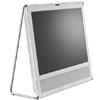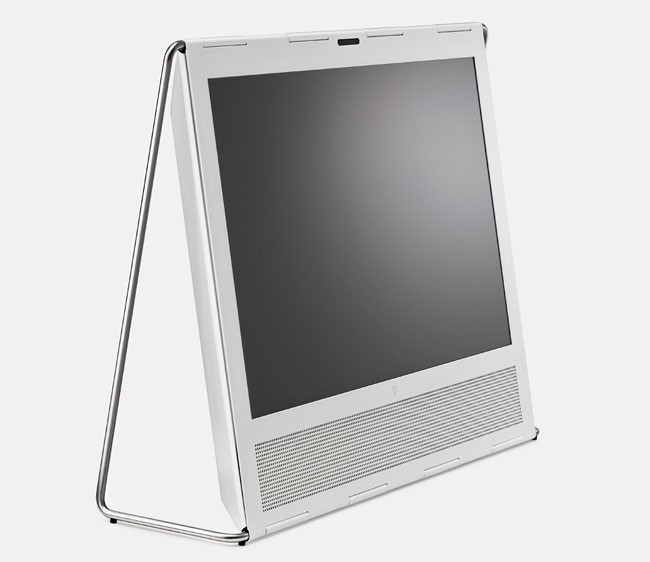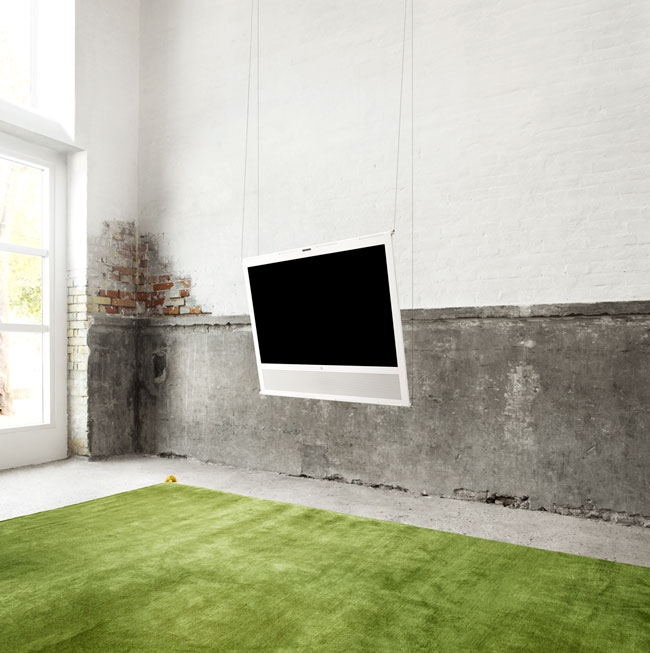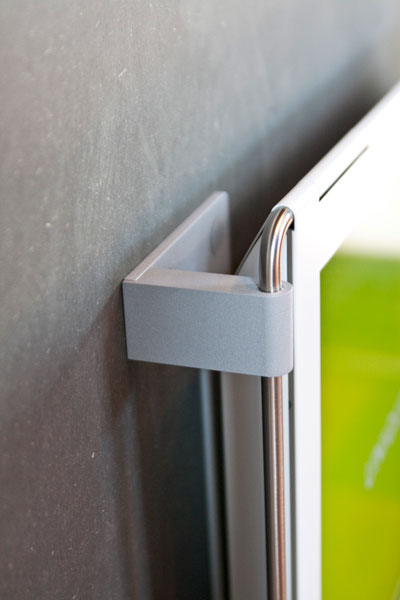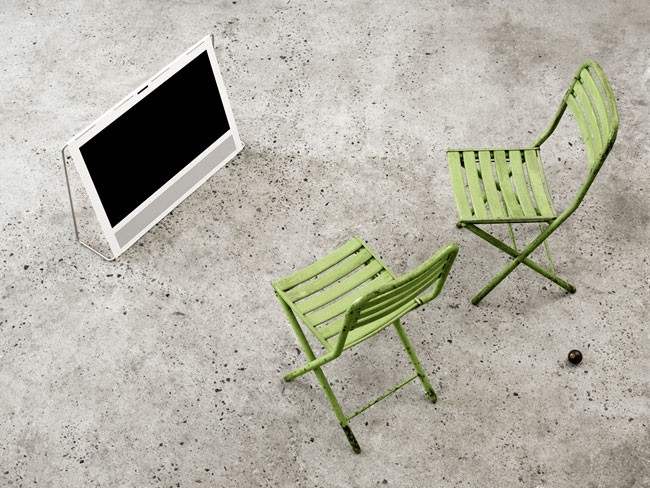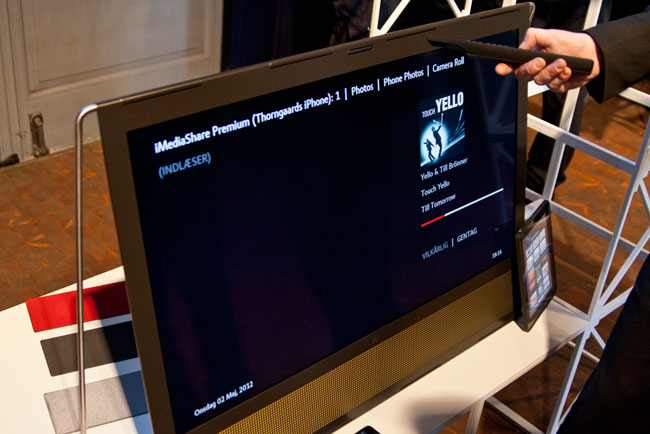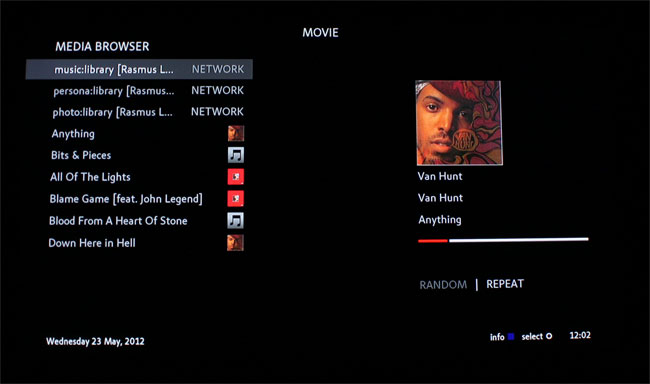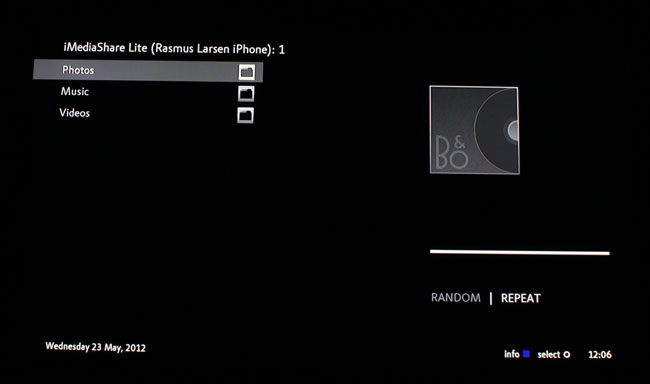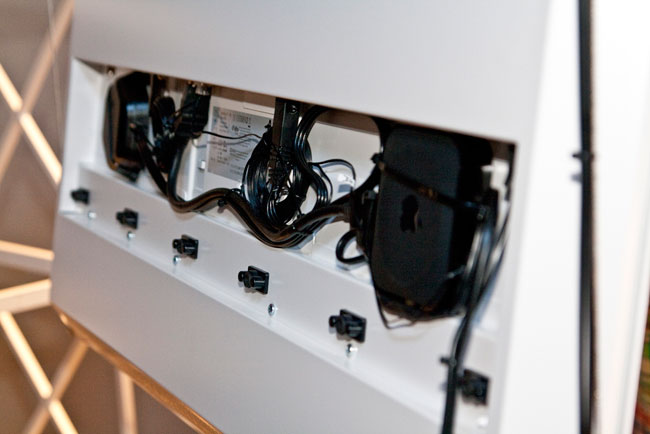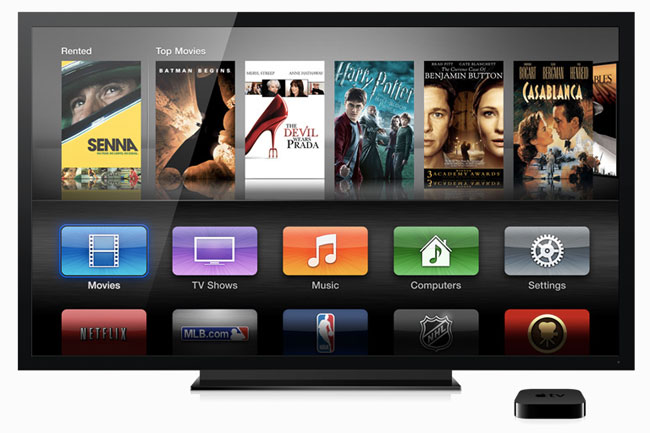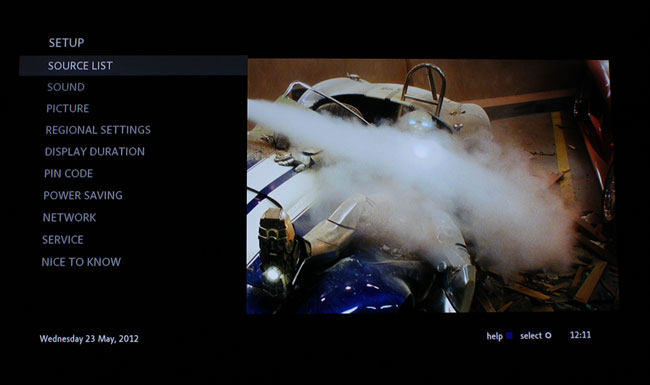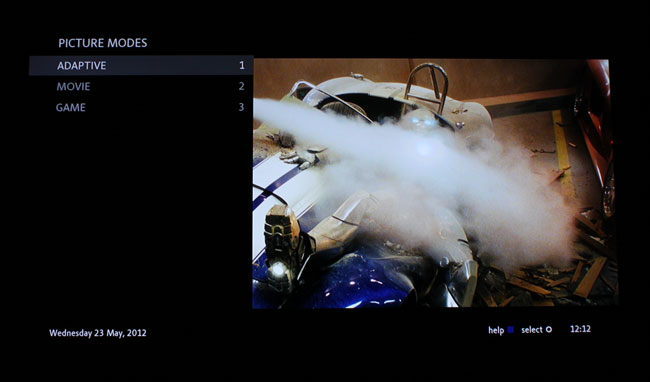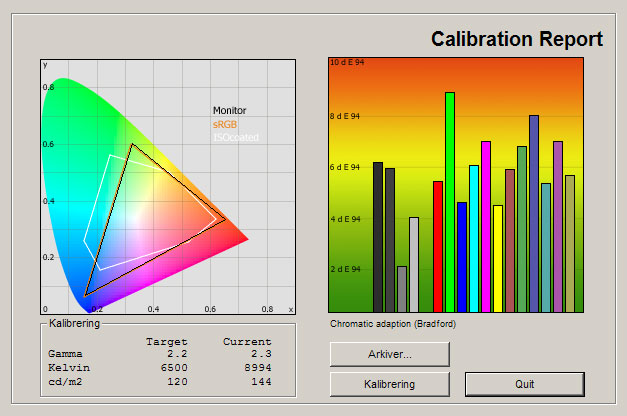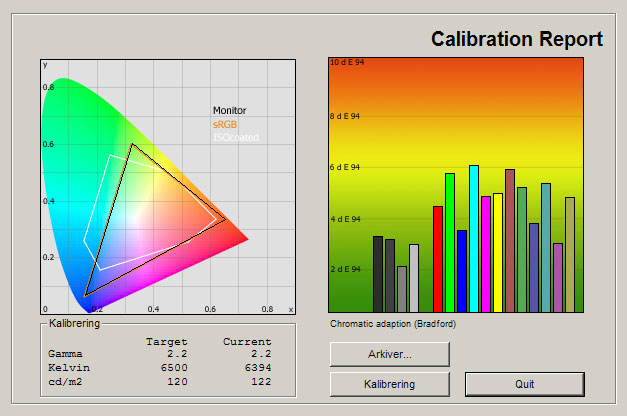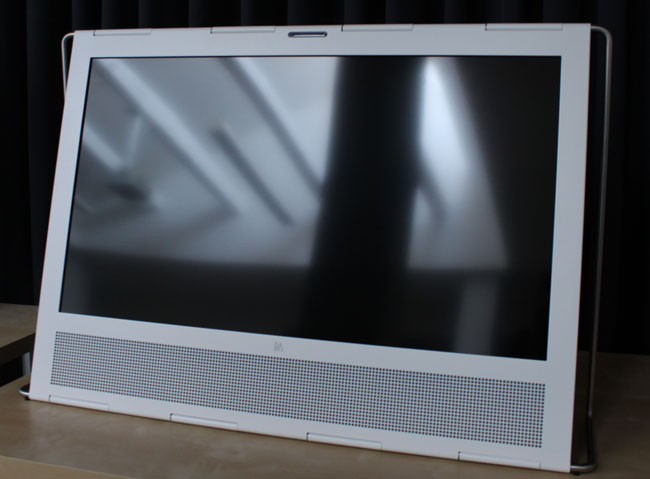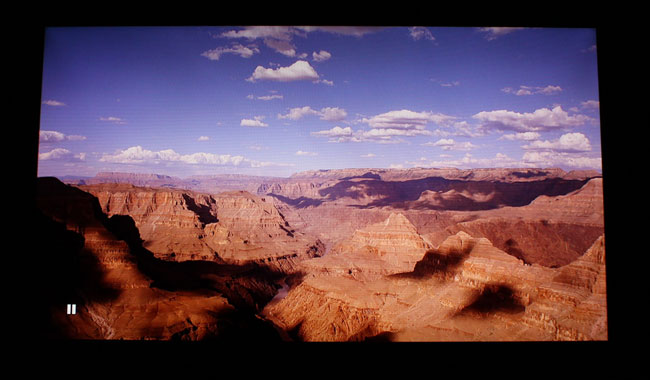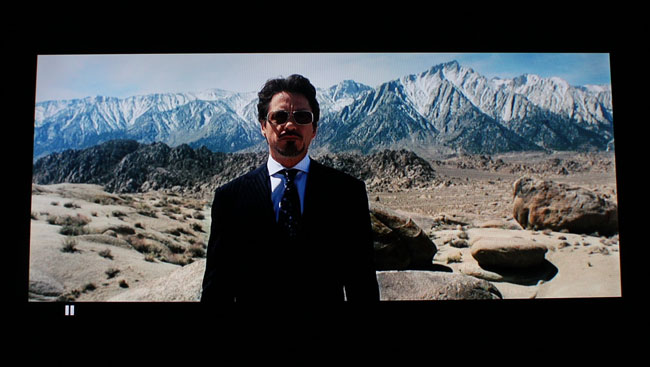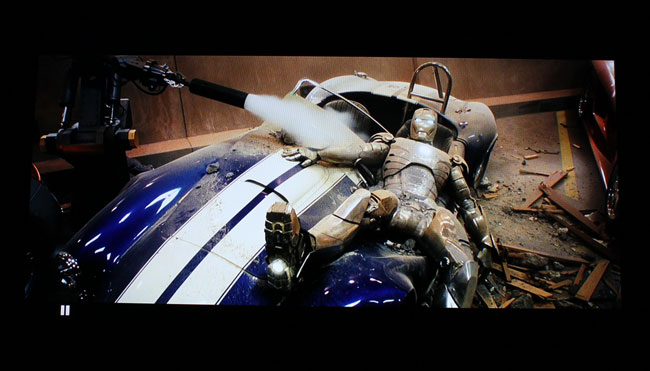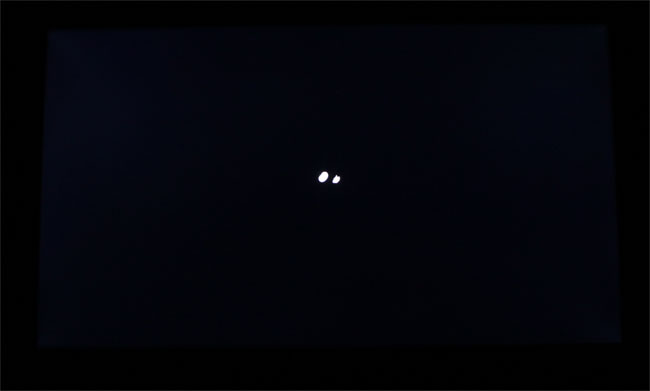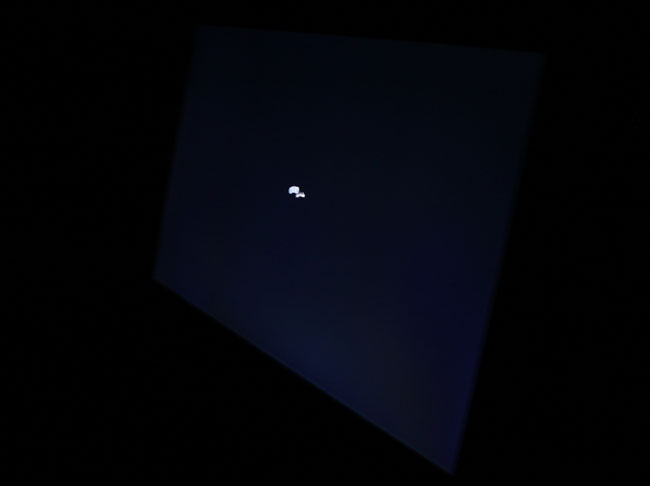Review: B&O BeoPlay V1
TABLE OF CONTENTS Specs - Our first impressions - Test tools - Functionality - Power consumption - Calibration - Picture quality - PC & Media Center - Viewing angles - Sound - Conclusion - Debate B&O BeoPlay V1 review
Bang & Olufsen, the maker of luxury electronics products, recently introduced their new B&O Play brand, created in an effort to reach a broader consumer segment with lower prices and stand-alone products. The first TV out of the labs is the new BeoPlay V1. With its customizable design, new media features, and Apple TV integration, B&O hopes to regain some ground in the mainstream segment.
But can BeoPlay V1 compete with TVs from Samsung, Sony, LG and Panasonic? Does it come with the same attention to detail as B&O’s traditional TV sets such as the BeoVision 10? And what can we expect from the new media features? FlatpanelsHD will find out in this review.
B&O BeoPlay V1 is available world-wide in 32 and 40 inches.
Subscribe to our Newsletter, RSS feed or twitter to receive notice when new reviews are online.
Size: 32" widescreen Resolution: 1920x1080 Response time: - Contrast ratio: - Brightness: - Viewing angles (H/V): 178/178 Panel type: LCD panel with edge LED Wall mounting: Swivel stand: (4 stand concepts)
Dimensions (HxWxD): 56.8cm x 76.6cm x 5.5cm (without stand) Weight 18.0 kg Built-in speakers: Inputs VGA DVI (but possible to convert through HDMI)
Audio (type) (Audio in/out)
S-video Composite Component HDMI (5 inputs)
Outputs Audio (type) S/PDIF (optical)
Other 3 x RJ45 Power Link + Apple TV slot Our first impressions
B&O’s BeoPlay V1 is unlike anything else on the market today. It has a unique expression with its slightly tilted design.
The TV comes in either black or white. The cabinet is made from metal with visible joints to make the appearance more authentic and “raw”, according to B&O. The finish is great and the speaker grill at the bottom enables users to customize their TV by sliding in different color fabrics from the side.
The stand/base solution is also customizable. Buyers can choose from 4 different solutions; ceiling, wall, floor and table. We have received the table variant and in the picture above you see how it is possible to hang BeoPlay V1 from the ceiling in four steel wires.
The wall mounting solution is also interesting. As seen above you can mount the TV using a metal pole and two bended brackets. This solution actually allows users to swing the TV out from a wall to a 180-degree angle.
Input and output connectors are found on the back side and hidden inside the cabinet. 5 HDMI inputs are available and B&O has also integrated Ethernet ports for a complete BeoLab surround speaker setup. And the most interesting part is the slot designed for the Apple TV box – more about that later on.Test tools
Our TV signal is DVB-S (satellite) from Canal Digital and DVB-T (terrestrial). We also have an analogue TV connection. Testing is done with the DVE (digital video essentials) and Peter Finzel test DVD. Testing is also done with DVD, TV, Blu-Ray and Media center/PC.
We use our own monitorTest. The software supports some of the traditional test patterns used to evaluate displays as well as some new and unique test patterns developed by the people here on FlatpanelsHD.
Sony PlayStation 3 is our Blu-Ray player.
All contrast measurements are based on the ANSI methodology.
Functionality
BeoPlay V1 can utilize either the Beo4 or Beo6 remote. Beo4 is the standard remote and the one that we used but you can find lots of hands-on reports regarding the newer Beo6 remote.
Beo4 has been around for ages. For Bang & Olufsen customers it is a well-known and loved device that is extremely flexible and well though out. It oozes of quality materials, feels heavy and lies comfortably in your hand. The remote can be programmed to control pretty much anything with infrared codes, for example Blu-ray players – or the Apple TV box. Also, notice how B&O has changed the logo at the bottom of the remote. The one that comes bundled with BeoPlay V1 says “B&O” instead of “Bang & Olufsen”. This is only a cosmetic difference because it is the same remote.
B&O has ventured into new territory with BeoPlay V1, and incorporated a range of media features based on open platforms. In the past, B&O used their own platform but with the B&O Play products, B&O wants to appeal to non-B&O customers, too. To use the media features you obviously need to connect BeoPlay V1 to your home network – either wirelessly (a WiFi dongle is included) or with a wired solution (for optimal stability).
One of the new features is the media player that can connect to any DLNA-enabled device – such as a PC, Mac, smartphone, tablet or NAS server – in the home and stream video, music and pictures onto the TV screen. It just requires DLNA software - or an app – on a device, and BeoPlay V1 will automatically detect the media files. In the image below you can see how we streamed music from an iPhone to BeoPlay V1.
This is not a novel feature (in the industry) and has been an integrated part of most major-brand TVs for some generations – even before the “Smart TVs” arrived – but B&O has tried to expand their offerings and create a smoother experience. B&O has left out internet functionality, though. No apps or video services are included.
Let us try to take a more through look at the media player. The media player is accessed through the source menu by pressing menu on the Beo4 remote – or you can assign one of the buttons on the Beo4 remote. B&O has kept their old, black/white menus. They work but look more and more conservative for each year now that Smart TVs have started popping up everywhere. The media player sticks to the same look but has some additional space for cover art and the like.
We tried a range of different setups during our review, including a PC, Mac, iPhone, iPad and a Samsung Android tablet. BeoPlay V1 found most of our devices (not Plex on a Mac, though) and streaming was relatively smooth but as with any other DLNA solution, you will encounter some weird formats that remain unrecognized. As long as you stick to the most widely used music, video and picture formats, BeoPlay V1 did its job. Also, if you have those weird formats try to find some DLNA software for your PC/Mac that can transcode content on-the-fly. Some DLNA apps will also allow you to access internet “channels” or content even though the TV itself has no internet apps. Below you see how we could access a range of internet services via the iMediaShare app on an iPhone.
BeoPlay V1 also allow you to stream from two separate devices at the same time, meaning that you can stream music from your NAS server – or BeoMaster 5 - and run a picture slideshow from you iPad at the same time. All devices obviously need to be connected to the same home network.
Still, like most other DLNA solutions, patience is required. When accessing for example large image folders you should expect waiting time. How much naturally depends on the speed of your home network, the size of the images, how many files you have in the folder and so on. All in all, a fairly good and effective DLNA implementation but nothing more than that.
An Apple TV box can fit on the back of the BeoPlay V1 TV
BeoPlay V1 also comes with a slot for the small, black Apple TV box. This is not an official partnership between Bang & Olufsen and Apple but we think it is a great choice. The Apple TV box is already better than any Smart TV platform we have come across, even though it is considered a “hobby” project. And it is still developing so instead of reinventing the wheel, B&O has gone with a proven and effective solution.
We will not introduce all the features of the Apple TV box here - read our full Apple TV (1080p) review instead – but let us elaborate on how B&O has integrated the media box.
As mentioned, the Beo4 remote is highly customizable and can be programmed to control pretty much anything. And with BeoPlay V1, B&O has provided access to their database of PUC codes for all the supported devices, which makes it easy to connect and control external devices via Beo4.
When we first connected the Apple TV box, BeoPlay V1 tells us that a new device has been registered. From here you select “Apple” and “Apple TV” from the database and your Bang & Olufsen remote can now control the Apple TV. You can also program devices to turn on or off with the TV – or simply leave the Apple TV box in standby mode (which is the desired solution). The only thing you cannot do is to make the BeoPlay V1 automatically switch to the HDMI port of the Apple TV when the Apple TV box is waken up from its stand-by mode. This is a shame because it basically means that you cannot use the AirPlay features unless you manually switch to the HDMI input with your Beo4 remote.
The Apple TV homescreen. The Apple TV box is seen in the lower right corner
To fully utilize the Apple TV box you obviously also need other Apple devices. AirPlay is only fully supported on iPhone and iPad, and if you want to input text when searching for a movie to rent on the Apple TV box, it is also much easier to do with an iPhone or iPad via the on-screen touch-keyboard. So, even though the Beo4 can control most of the features of the Apple TV box it has some limitations from it physical button-only design. An iPhone or iPad (and the Remote app) is required if you want to fully utilize the Apple TV; no matter how you look at it. Again, read the Apple TV review if you want to learn more.
Besides the media features, Bang & Olufsen has also integrated a 5.1 surround sound decoder and Ethernet outputs for connecting BeoLab speakers (or other active speakers). When speakers are connected you can choose from a range of setups, and for example use the speaker in the TV as a center speaker.
Unlike many other B&O products, BeoPlay V1 is relatively easy to set up. While most other products require a visit from the Bang & Olufsen store to fully utilize the many functions and the remote options, BeoPlay V1 has a guided start-up screen. You can still ask Bang & Olufsen to help you but if you are semi-technical, you can easily do it yourself. Just plug in the right inputs and follow the on-screen guide.
After that you will have your TV channels listed, an active network (wired or wireless) connection on the TV and a functional EPG working without hiccups. From here you can assign functions to buttons on the remote and connect other devices via HDMI and follow to on screen menu to configure remote controlling of the devices.
Ohh and, the BeoPlay V1 TVs also have Bang & Olufsen’s characteristic electronic curtains.
BeoPlay V1 obviously has a lot of sound setting options and is an advanced sound system – just like many other B&O audio products. We had no speakers at the office to test the functionality but it is important to understand that BeoPlay V1 is more than just a video device. However, B&O has also chosen to leave out MasterLink and that will come as a negative surprise for many existing B&O users.Energy consumption
| Compare power consumption measurements on different TVs and monitors with our interactive power consumption applet here. |
 |  | |
| Standby | 0.3 W | 0.3 W |
| SD+HD | 78 W | 73 W |
After calibration we measured power consumption to 73 W on the 32-inch version of BeoPlay V1.
Calibration on B&O BeoPlay V1
Below you can see an out-of-box measurement on B&O BeoPlay V1 in the Standard picture preset without Eco mode.| The graph says this: The number on the left is the delta value. Delta is a difference between two factors; here it’s the difference between the measured color on the panel and the actual color that is our target. |
The out-of-box settings are not particularly impressive but not different from any other “LED-TV” on the market today. Some colors are oversaturated while others are undersaturated because the gamma curve is not constant.
The color temperature is too high, making pictures appear a bit too cold and bluish, and Bang & Olufsen has also added a fair amount of artificial sharpening in the pictures (not shown in the graphs).
Luckily, Bang & Olufsen has integrated a Movie (and a Game) profile. The Movie profile has been optimized for 6500K, 2.2 gamma and thus accurate color reproduction. This is the first time B&O has provided users with the option, so let us try to do our usual measurements.
The Movie profile is significantly closer to the picture standards used in the movie industry, and it is great to see B&O take this route. The result is not as accurate as THX modes seen on some TVs but is a great addition for movie lovers and Blu-ray fans.
As illustrated, color deviations are fairly low and the color temperature is very close to our 6500 Kelvin target, which means that pictures are neither too reddish or bluish.
However, even though Bang & Olufsen has provided more picture settings than usually found on their TVs, the options are still very limited. You can control the backlight (called contrast), contrast (called brightness) and a few sensors. That is all. No RGB (red, green, blue) settings are enabled and therefore we cannot really improve much on the TV. Some problems remain in the Movie profile, such as a slightly too high level of artificial sharpness and some color deviations. This is not critical by any means but we would have liked to at least be able to remove the added sharpness. We have no calibrated result or settings to share with you either.
The only thing I want to conclude when it comes to picture settings is that you can choose to either activate or deactivate the Eco sensor (called Room Adaption). When activated the TV automatically adjusts brightness according to the surrounds, which is preferable if you watch TV in changing light conditions during the daytime and evening. There is also a setting option called “Judder Cancel”. This is the 100 Hz system. If you do not like the smoothened out pictures during typical TV watching, try deactivating this setting in the advanced menu.
Picture quality on B&O BeoPlay V1
| In this section I go through picture quality with the calibrated settings. |
BeoPlay V1 uses a LCD panel with a semi-glossy coating like most other LED models today. Because of the tilting angle, reflections are reduced significantly. Some reflections still occur in a brightly lit room and the coating is reflective but the tilting angle actually helps (unless you have ceiling windows).
BeoPlay V1 gave us fairly accurate colors but color gradation is not great. We registered bands in our color gradients tests; not only in the darkest color transitions but also in the semi-dark and bright color transitions, which means that the TV is not able to distinguish all colors – probably due to a subpar internal color processor.
We went on to do some practical tests to confirm and found that the issues also at times replicate in real scenes – mostly in the semi-dark areas of pictures. This is a shame and one area that draw the overall performance down a notch. It is strange to observe because it has never been evident on previous B&O TVs. You might not notice it during casual viewing but it is visible at times.
SD pictures appear detailed and pleasant. The out-of-box settings had a slightly too high level of artificial sharpening but the movie profile reduces that a lot. The colors appear natural but color reproduction is also affected negatively by the color problems discussed above. This does not affect picture quality to any critical extend but is visible at times. For the most part, SD picture quality is quite good, but we feel that the meticulous attention to detail that we experienced with the BeoVision 10 and BeoVision 7-55 is not found in BeoPlay V1 – and that seems to be the compromise of the cheaper video processor.
HD picture quality looks great, and even though the BeoPlay V1 TVs only come in 32 and 40-inch version you can still benefit from feeding them with HD channels or Blu-ray movies. Detailing is very high and the pictures look intense and vivid. The color issues still appear at times but not to the same extend as with lower-quality content. Low quality content seems to enhance the issue, as is often the case on TVs
The TV uses a LCD panel with backlight scanning. We noticed only very little blurring during fast motion but our stress tests revealed that BeoPlay V1 had some minor bluish overdrive trailing. Not enough to concern us but we have seen faster LCD panels in the past, including B&O’s own BeoVision 10. Still, for most content, including action movie and sports, the LCD panel is more than adequate and reproduces pictures with a fairly high level of detailing.
BeoPlay V1 uses a 100 Hz frame interpolation system to make moving images appear smoother and without judder. It resembles pretty much any other 100/200 Hz system out there. It definitely makes moving images appear smoother but it also makes pictures look artificial and soap opera-like. You can enable or disable the 100 Hz system in the advanced menu.
Next, we moved on to on to examine input lag and we had a bad feeling here. When a PC is connected you can clearly feel the delay when moving the mouse and our testing revealed that BeoPlay V1 often topped 200 ms in input lag, which makes fast console games close to unplayable. Even in the game mode, BeoPlay V1 failed to lower input lag to an acceptable level, and this is an important issue that B&O need to address. In the game mode, casual gaming is okay but if you prefer sports games, such as FIFA, racing games or FPS games, such as shooters, I think you will be bothered by the delay. We were.
Below we have measured black level and contrast.
 |  | |
| Black level | 0.05 cd/m2 | 0.05 cd/m2 |
| Brightness | 141 cd/m2 | 122 cd/m2 |
| Contrast ratio | 2820:1 | 2440:1 |
Contrast ratio +/- 50
After calibration we measured black level to 0.05 cd/m2, which is very close to the best-performing edge LED based TVs today. In comparison, Samsung ES8000 was measured to 0.04 cd/m2. Black is not 100 % black in a dark room but the coating on the panel makes pictures look vivid and intense during daytime and in the evening. The best part is that the panel seemed to distribute light very evenly without leaks. We will confirm if that is the case in a second.
Shadow detailing is great, too. Only the 1-2 darkest shades of grey were hard to distinguish from black.
Below we have examined the B&O BeoPlay V1 a completely dark room to see if it has clouding, backlight bleeding or floating black issues.
This is one area where BeoPlay V1 really impressed us. Some form of clouding/backlight bleeding is generally seen on every edge LED based TV today but BeoPlay V1 had almost 100 % perfect light distribution, making us wonder if we are even looking at an edge LED based LCD-TV. Of course we are; that is how B&O has designed BeoPlay V1, but we were very impressed with the result. We are not sure if the 40-inch variant will provide the exact same results but it looks like B&O has gone to great lengths in order to resolve this issue.
PC and Media Center
The TV automatically switched to 1:1 pixel mapping when a PC is connected.Viewing angles
Viewing angles are fairly wide and in the same league as modern LED models. Some color washout occurs in the most saturated colors but the change is acceptable, and you can watch TV from most angles.Black looks a bit more greyish from extreme angles but the change is not critical. BeoPlay V1 compares – more or less – to a typical Samsung LED model.
Sound quality
FlatpanelsHD has received the 32-inch variant and the speaker system varies in the two size classes. We have already heard the speakers in the larger 40-inch variant where sound is richer and more defined but the 32-inch TV holds a fairly good speaker system as well.BeoPlay V1-32 is noticeable better than the typical slim TV today, and it excels over pretty much any other TV out there. Sound is fuller, clearer and more pleasant but compared to the speaker system in the larger 40-inch version it lacked a little bit of bass.
BeoPlay V1 obviously does not compare to B&O’s BeoLab speakers, and the BeoVision 10 is also in a different league but it is always great to see TV manufacturers concentrate on sound quality and not only picture quality. BeoPlay V1 has a range of audio setting options and you can also connect external BeoLab speakers. For more information on this, see the Functionality section.
Conclusion
BeoPlay V1 is an interesting TV in many ways. It is the firstnot to rely on Bang & Olufsen’s MasterLink system (surely to be missed by existing B&O owners) and the first one to employ a more open integration with other products. With BeoPlay V1 the MediaPlayer (DLNA) can connect to a range of devices, including PCs, Mac, smartphones, tablets, network HDDs (NAS) and more. This means that you can wirelessly stream movies, music and pictures. It is a pretty neat implementation and it is functional but it is not a novel feature in the TV industry. And then there’s the Apple TV integration. You can mount an Apple TV box on the back of BeoPlay V1 and set up the Beo remote to control everything. Apple TV is already a proven product and even though it still lacks some content, it has great features such as Netflix, iTunes and AirPlay – and possibly more to come. Instead of developing a new “Smart TV” platform, B&O has used an existing one; and it outperforms every single TV manufacturer’s Smart TV platform on the market today. However, you can achieve almost the same by connected the Apple TV box to any other TV on the market. We did not dive deep into the external speaker possibilities but BeoPlay V1 has a complete 5.1 surround decoder built-in.
When it comes to picture quality, BeoPlay V1 has some of the characteristics of the more expensive BeoVision 10 but the meticulous attention to small details that we praised in the BeoVision 10 review is not found in BeoPlay V1. It still has very decent SD and HD picture quality and it excels in black depth, picture detailing, light homogeneity and shadow detailing. It also has different picture profiles if you prefer to be in charge. But we also found some problems with color banding / color gradation. It still competes in the good end of the LED market and is a great TV for movies and TV channels but it fails in the gaming area due to high input lag.
To summarize, we need to underline that BeoPlay V1 is more than a simple TV. You need to remember that it has a complete sound module inside and can enter into a B&O sound setup. The missing MasterLink implementation will affect existing owners but new B&O customers will enjoy the more open approach. Picture quality is generally good but we had hoped to see some of the great systems from the more expensive Bang & Olufsen TVs move down into the BeoPlay range - maybe we were too hopeful. We obviously need to compare BeoPlay V1 to the broader market, and even though it competes with many top LED models from popular mainstream brands, it remains a contender; not a champion.
 |  |  |
| SD and HD Picture quality | Color gradation issues | Living room |
| Black depth | Too high input lag for gaming | Home Cinema |
| Refreshing design and choice of materials | No MasterLink | Bedroom |
| Functional MediaPlayer and Apple TV implementation | Apple TV implementation not unique | |
| No clouding / backlight bleeding | ||
| 5.1 sound decoder for B&O speakers built in | ||
| Online database for remote control set-up |
Subscribe to our Newsletter to receive e-mails when new reviews are online.

